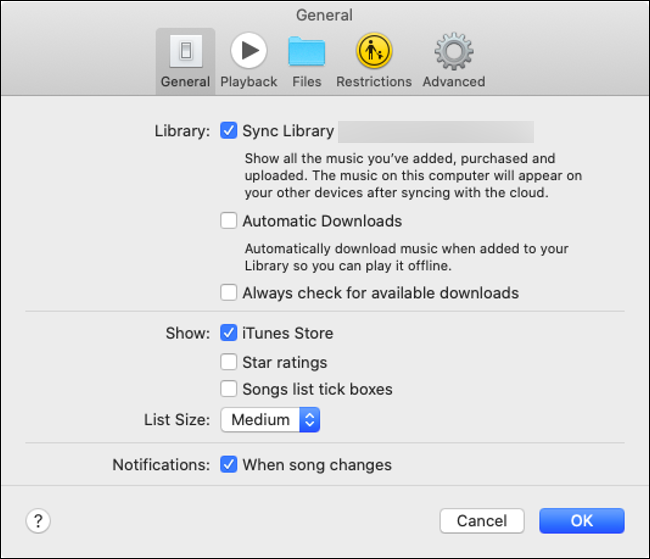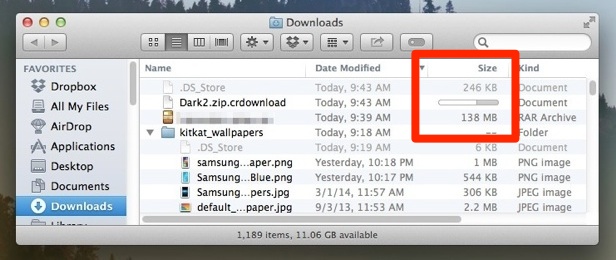- Mac Download Files Not Showing In Finder Tool
- Mac Files Not Showing In Finder
- Mac Download Files Not Showing In Finder Online
Oct 07, 2019 Select the app from the list in the Files section. In the Documents list, select the file that you want to delete, then press the Delete key on your keyboard. When the Finder asks you to confirm, click Delete. There might be other ways to delete files from an app. See the app's user guide to find out more. See hidden files on Mac via Finder. As mentioned above, it doesn’t take much to make the hidden files on your Mac visible. In fact, you can check out all of the hidden files on your Mac by following just three easy steps: In Finder, open up your Macintosh HD folder; Press Command+Shift+Dot; Your hidden files. See hidden files on Mac via Finder. As mentioned above, it doesn’t take much to make the hidden files on your Mac visible. In fact, you can check out all of the hidden files on your Mac by following just three easy steps: In Finder, open up your Macintosh HD folder; Press Command+Shift+Dot; Your hidden files will become visible.
I have stored about 8GB photos and videos in the Camera roll on my 64GB iPhone 6S. There is hardly any space for new pictures, and I want to save the images to my MacBook Pro. I connect my iPhone to MacBook Pro and open iPhoto to display iPhone photos. However, No pictures or videos are uploaded. I have just updated my iPhone to iOS 11, is that the problem?
iPhone not showing up on Mac or iPhone not showing up on iPhoto/Photos on Mac is a high-frequency problem for many users, especially with iPhone update to iOS 11. To help users to solve this matter, we offer all the tried and true methods on this page. Moreover, the EaseUSMobiMover Free is recommended in the second part to assist users in transferring photos, videos, music or other data from iPhone to Mac when iPhone not showing up on Mac can’t be fixed with tips below.
Turn on Finder integration. If you’re on OSX 10.10 or higher, get sync status directly from Finder by enabling Finder overlays in Settings. First, click the Apple logo in the top left corner of your Mac Desktop and select System Preferences, then select Extensions in the top-level menu (shown in the 3rd row from the top). Toggle on the OneDrive Finder Integration to enable Finder overlays. Other ways to share. Learn about other ways you can share files between your Mac and your.
Part 1: Common solutions to fix iPhone now showing up on Mac
1. Change another USB cable or USB port
USB cable or USB port not working may be the first reason for iPhone not showing up on Mac or not connecting to Mac. When you are connecting iPhone to Mac, do use the original lightning cable, and try a different USB port on your Mac.
2. Unplug and plug in iPhone again
Unplug and plug in iPhone to Mac back for a few times to troubleshoot the USB cable and port problem. If this won’t work, continue and try more solutions.
3. Restart your iPhone and Mac
iPhone or Mac restart will clear the device’s memory and starts it up fresh, which is a simple but very effective way to solve some software running problems, like the live wallpaper not working in iOS 11.
Restart iPhone 8/8 Plus/7/6
- Press and hold the Side button until the slider appears.
- Drag the slider to turn off your iPhone.
- Press and hold the sleep/wake button again until the Apple logo appears on your phone screen.
Restart iPhone X
- Press and hold the Side button and either volume up/down button until the slider appears.
- Swipe the slider to turn off your iPhone.
- Press and hold the Side button again until the Apple logo appears on your phone screen.
Restart Mac
Press the power button (or press Control+Eject) and, when a dialog box appears, click the Restart button.
4. Update Mac OS and iOS system
Different iPhone requires different Mac OS system, make sure your Mac system is higher than the system on iPhone. You'd better keep the systems on your iOS and Mac are the latest ones.
5. Close third-party software
Mac Download Files Not Showing In Finder Tool
If you are running a third-party photo storage device on your Mac, the iPhone may be won't appear on Mac iPhoto. Or if there is a software conflict, the problem also can occur. Wherefore, close the related third-party tools when you meet the issue.
Part 2: How to transfer files from iPhone to Mac when iPhone not showing up on Mac
If above solutions can't fix iPhone not showing up on Mac iPhoto/Photos/Finder and you need to export photos, videos and other data from iPhone to Mac to free up iPhone space, how to do it quickly without using iTunes? As if iPhone not showing up on Mac Finder, it probably won’t be recognized by iTunes.
Here is the highly recommended EaseUS MobiMover Free to help you to transfer files from iPhone to Mac without iTunes in one-click or optionally. You can move contacts, messages, notes, calendars, voice mails, books, Safari bookmarks & history, photos, videos, music, playlists, and audiobooks without files quantity and size limitation.
Step 1. Connect your iPad to your Mac with a USB cable and tap 'Trust This Computer' on your iPad if you are asked > Run EaseUS MobiMover for Mac and choose the 'Phone to Mac' on the main screen > Click the 'Next' to continue.
Step 2. Then, MobiMover automatically reads and loads all the supported data on your iPad as the screenshot shows below. You are free to send them all or selectively export one data type at a time. Besides, you can set the destination for saving exported iPad files on your Mac. If you don't customize it by yourself, MobiMover will send them to a desktop folder named by Exported by MobiMover.
Step 3. Click the 'Transfer' to import data from iPhone or iPad to Mac. When the process has completed, you can view, edit, or delete them as you want on your Mac.
Before you begin

- Update your iPhone, iPad, or iPod touch to the latest iOS or iPadOS, and your Mac to the latest macOS.
- Set up iCloud on all of your devices.
- Make sure that you’re signed in to iCloud with the same Apple ID on all of your devices.
- If you have a Windows PC, update to Windows 7 or later and download iCloud for Windows.
If you have a device that can't update to the latest iOS or macOS, see the minimum system requirements to use iCloud Drive.
Get started
Set up iCloud Drive everywhere that you want to access and edit your files.
On your iPhone, iPad, and iPod touch
- Go to Settings > [your name].
- Tap iCloud.
- Turn on iCloud Drive.
You can find your iCloud Drive files in the Files app.
If you're using iOS 10 or iOS 9, tap Settings > iCloud > iCloud Drive. Turn on iCloud Drive, and tap Show on Home Screen. Then you'll find your files in the iCloud Drive app.
Mac Files Not Showing In Finder
On your Mac
- Go to Apple menu > System Preferences, then click Apple ID. If you’re using macOS Mojave or earlier, you don’t need to click Apple ID.
- Select iCloud.
- Sign in with your Apple ID, if you need to.
- Select iCloud Drive.
If you want to add the files from your Mac Desktop and Documents folder to iCloud Drive, update your Mac to macOS Sierra or later then turn on Desktop and Documents. On your Mac, you can find the files on your Desktop and in your Documents folder in Finder under iCloud. If you add a second Mac Desktop, the files from your second Mac won't automatically merge with the files on your first Mac. Go to your Desktop and Documents folders in iCloud Drive, then look for a folder with the same name as your second Mac.
On iCloud.com
- Sign in to iCloud.com.
- Select Pages, Numbers, or Keynote.
- Click Upgrade to iCloud Drive, if you are asked to upgrade.

On your Windows PC
Mac Download Files Not Showing In Finder Online
After you set up iCloud Drive on your iPhone, iPad, iPod touch, or Mac, you can set it up on your Windows PC.
- Go to Start, open Apps or Programs, and open iCloud for Windows.
- Enter your Apple ID to sign in to iCloud.
- Select iCloud Drive, then click Apply.
What's next
After you set up iCloud Drive, any documents that you've already stored in iCloud are automatically moved to iCloud Drive. Your iPhone, iPad, and iPod touch keep your files in the Files app in addition to the Pages, Numbers, and Keynote apps. If you don't see your files in these apps, they might be on a device that doesn't have iCloud Drive turned on.
Learn more about using iCloud Drive.